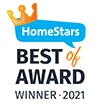Installing a water heater without following a guide can result in serious physical injury. Electric water heaters have many electrical, mechanical, and even solar components that can electrocute or cut a person if they’re not careful.
Water heaters usually come with a manual, and many people hire professional plumbers or handymen to install them. However, if you’re trying to save on money by buying a used one and installing it yourself, you’ve come to the right place. You can install an electric water heater hassle-free by following the simple instructions down below.
A Preliminary Checkup
Most people take out their old water heaters because they’re not working efficiently anymore. You might turn on the shower in the morning and find that you have to wait a few minutes before the hot water comes on. Many businesses use hot water out of the tap, and they must be able to clean dishes, groom pets, or wash machine parts quickly. A water heater might not be functioning well for many reasons, and you might save more money by repairing it instead of replacing it.
Check Your Heating Element
The most common problem with water heaters is their heating elements, which wear out after several years of use. Check your unit’s heating element and try replacing it. If you see any water leaking out to the floor or off the top of your water heater, you’ll probably need to buy a new one.
Check Your Water Pressure
You’ll need to buy a water pressure gauge from a local hardware store, but it will come in handy in many repair situations. Check your water pressure from an outdoor valve and make sure it stays between 50 to 60 PSI.
If you see that your water pressure is between 80 to 100 PSI, lower it by adjusting the main water shutoff valve. Your house will either have a gate shutoff valve or a ball shutoff valve, and you can find it on the side of your home that’s facing the street. Excessive water pressure can drastically reduce the lifespan of your new water heater.
Check Your Expansion Tank
When water heats up, it expands, and your expansion tank takes all the excess pressure so your pipes and valves don’t explode. You can install one by putting in push-fit fittings on the cold water supply pipe. The size of your expansion tank should be proportionate to the size of your heater.
A 100-gallon water heater will need at least a 5-gallon expansion tank. Check your water heater’s manual or its manufacturer website to learn the exact specifications.
Replacing Your Unit
Has your family grown in size since you bought your last unit? Have you made additions to your house, like a second floor or a roof deck with hot showers and faucets? Before you make a purchase, make sure that you’ve checked your city’s building codes, especially if you own a business. There are usually size and energy specifications on the white and yellow stickers you will find on your tank.w
How to Remove Your Old Unit
Turn off the Power
Turn off your house’s branch circuit breaker connected to your heater. See that no remaining currents are flowing through the wires by testing them with a circuit tester.
Label the wires and detach them from your water heater.
Empty Your Old Water Heater
Empty your old heater’s reservoir by turning on a hot shower or faucet and leaving it running until hot water stops coming out. Find the valve on your heater’s cold water supply line and switch it off.
You’ll see a drain outlet on the bottom of your tank. Attach a hose to it and open the drain valve. Wait until the water is completely gone.
Detach the Old Pipes
Once you’ve emptied your tank, grab a wrench and detach the discharge pipe. You can find it attached to your heater’s temperature and pressure relief valve. Detach all the pipes and lines connected to your old unit, and transfer it onto a hand truck.
How to Install an Electric Hot Water Heater
Prep Work
Get a drain pan and place it underneath your water heater to keep your basement, garage, or attic from flooding. Most water heaters come with temperature and pressure relief valves. If your unit doesn’t have one pre-installed, look for it in the box, or visit the manufacturer website to see if you need to buy one.
Don’t recycle your old heater’s T&P relief valve. You may, however, reuse your old discharge pipe.
Putting in the Discharge Pipe and Water Hook-Up
Attach the discharge pipe to your T&P valve and point it toward a bucket or a drain. It will discharge water when excess pressure builds up in your heater.
Your heater will come with a flexible water hook-up, which will look like a metal kitchen hose. Put plumber’s tape on the heat traps of your tank and attach the hose there with a wrench.
Connecting to the Supply Pipes
Put plumber’s tape on both ends of the connector body threads included with your hose kit. Connect the hose to it, and then hold it next to the water supply pipe. Mark, cut, and de-burr the supply pipe so that it lines up perfectly with the hose with a small allowance.
Put a compression nut up the supply pipe, then insert it into your hose kit’s connector body. Screw the compression nut onto the connector to form a tight seal.
Preparing for Earthquakes
Some states require that you brace your water heater with seismic straps to prevent it from toppling over in the event of an earthquake. Different manufacturers have different ways of strapping in their tanks, but generally, you need to install two straps: One 18 inches from the bottom of the tank and one 6 inches from the top.
These straps should attach to two wall brackets that you may have to purchase separately. Make four pilot holes in the studs of the wall and secure the straps using a ratchet and socket.
Checking for Leaks
Take away the aerator from your kitchen faucet and let it run cold. It should take a while before your tank fills up with cold water. Use that time to check your pipes for leaks.
Connecting the Wires
Your tank must be full before you start heating water. Dry-firing your heater will ruin its heating element.
You will find a junction box on top of your heater with a screwed-on cover. Remove it and hook up the ground wire together with the ground screw. The ground screw on most models has a green indicator.
You can also use the labels on your previous unit as a guide since the electrical design of water heaters has not changed since the early 2000s. Conjoin the ground wire and the ground screw by twisting them together using the wire connectors, and then put back the junction cover. Turn on the power from the circuit breaker and see if your heater powers up.
Powering Up
If your heater is not receiving power, re-check your connections. Always turn off your circuit breaker whenever you open the junction box. It might take several hours to heat a fresh tank of cold water.
We recommend that you put 120 degrees Fahrenheit as your initial temperature. If you see water coming from the discharge pipe, it means that your water is too hot.
Installing a Heater is a Hard Job
The average weight of an electric water heater is 150 pounds. Replacing it requires more than one handyman, which is why mainstream home improvement companies can charge up to $2,000 to do it for you. Though you may know how to install an electric hot water heater, you could still injure yourself in the process.
At MT Drains, we have trained and professional plumbers who charge much less for high-quality service. Call us today at (905) 761-5551 and get the best plumbing services in Vaughan and the Greater Toronto area.






